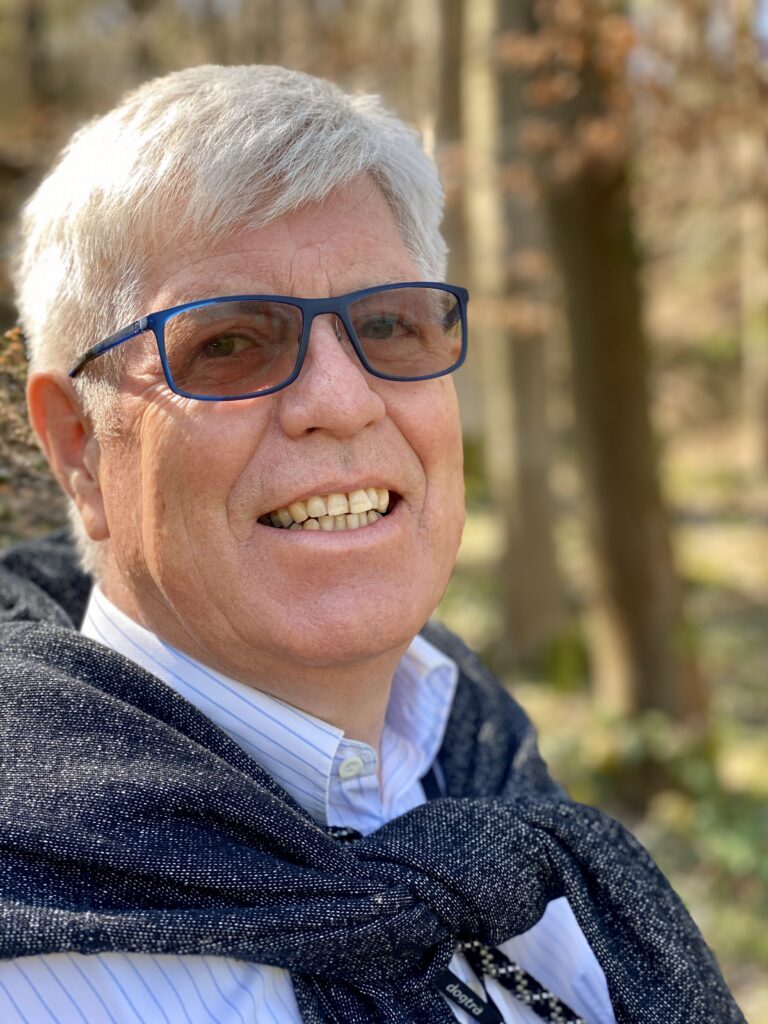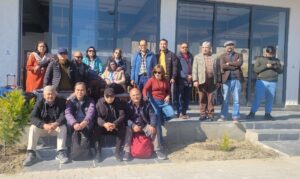Interview with Rotary International Vice President Hans-Hermann Kasten

Namaste from Nepal, Vice President Hans-Hermann Kasten. This is Rtn Gautam Shrestha from Rotary Club of Yala (RID3292 Nepal, Bhutan) and currently I am the Chair of RID3292 Publication and Newsletter and we’re delighted to have this opportunity to learn more about your vision for Rotary International.
To start, could you tell us a bit about your background and how you became involved with Rotary International? What has your journey been like, and what motivates you in your role as Vice President?
I came to Rotary in quite the traditional way—a friend of mine and business partner told me about the clubs, the friendships, and the great projects they were involved in. This piqued my curiosity as I was already reflecting on how I could contribute at this stage in my career. I engaged immediately and became club president after just a few years.
My role as club president taught me that the clubs and their members are the foundation of Rotary’s activities and success. As District Governor of District 1810, I learned much about the need to support the clubs through the district and Rotary International (RI). All Rotary officers must continually prove their usefulness to clubs and members. As a governor, and later as a representative of my district to the council of legislation, I learned a lot about areas where Rotary could improve—enhancing its impact and ensuring the organization remains fit for a long-lasting future.
This motivated me to not only address these ideas and topics as a “legislator” but to roll up my sleeves as an officer of RI. My motto and vision, “Rotary needs to become younger, more female, more colorful, and more joyful,” which I established during my governor year, is still valid today and serves as my north star when discussing our action plan and current focus on membership.

How do you perceive the current state of Rotary International’s membership? What are the key challenges you identify in attracting new members?
RI membership numbers have been stagnating for years. Worldwide, we need to pay more attention to the question of how to grow membership. My personal motto, “Rotary has to become younger, more female, more colorful, and more joyful,” highlights the key points of membership development. Sorry for repeating this, but it is essential that we reflect on how to make clubs attractive. As board members, we focus on this, we work with the governors in our districts, and we address members directly. I am very passionate about this topic; increasing membership is crucial for our continued attractiveness and our ability to do good in the world. Stagnation will not bring the “Magic of Rotary” to life.
How do you plan to improve member retention across various Rotary clubs? What initiatives do you believe will enhance member engagement and satisfaction?
Our strategic plan, “The Rotary Action Plan,” leads the way to success for our clubs. We must bring this plan into the clubs. Every club should hold at least one strategic meeting each year based on the Action Plan. Especially, the pillar “engage” will help to involve new and existing members and improve retention rates. We are not doing too badly at attracting new members, but we often fail to take the time to integrate them into the clubs and bring the magic of Rotary to them. As a result, too many people leave our clubs after a short time. If we seriously talk to our members, understand their passions, and know how to use them, we can increase satisfaction and engagement, paving the route to success.
How do you envision the role of Rotary Districts evolving in the coming years? What support and resources do you believe are necessary for districts to thrive?
In many parts of the world, districts do a great job of communicating between the clubs and the headquarters of RI in both directions. To ensure this communication has a clear direction and long-term perspective, we are establishing a system of rolling three-year goals based on our Action Plan. This will enable planned actions, continuity, and focus. The districts, under the leadership of the current governor and involving past and incoming governors, play a vital role in the successful development of Rotary—both internationally and locally.
Rotary’s Friendship Exchange program has made its impact on peace building and international cooperation. How could we promote extensive exchange between countries like Germany and Nepal? What challenges are faced by clubs and participants in Exchange program, and how are these challenges addressed? Are there any future plans for expanding and enhancing the Friendship Exchange program?
Rotary’s Friendship Exchange program plays a vital role in peace building and international cooperation. To promote extensive exchanges between countries like Germany and Nepal, we can enhance awareness, establish club partnerships, and leverage technology for virtual meetings.
Challenges such as logistical issues, cultural differences, language barriers, and financial constraints can be addressed by thorough planning, cultural sensitivity training, language support, and seeking financial assistance.
Future plans for the program include expanding partnerships, organizing thematic exchanges, creating youth-specific programs, and developing digital platforms for virtual exchanges. In my zones, we strongly support the Friendship Exchange Program, encouraging clubs and districts to select their exchange partners. By addressing challenges and promoting exchanges, we can build stronger international relationships and contribute to global peace and cooperation.

What personal experiences and values guide your vision for Rotary International? How do you plan to inspire and lead Rotarians worldwide toward achieving this vision?
I support the Rotary Vision Statement 100%: “Together we see a world where people unite and take action to create lasting change across the globe, in our communities, and in ourselves.” I am using all available resources, programs, my personal influence, and my travels and interactions with other Rotarians, both in my zones and beyond, to push for this. I have to say it again—our action plan is well thought out and provides the foundation to make all of this happen. If you think about it, it is quite amazing how an organization of 1.4 million volunteers like Rotary shares the same values. Just imagine how much more we can achieve if we direct this energy and motivation towards growth, working together on a three-year strategy and our projects.
What do you see as the biggest challenges Rotary International will face in the next decade? How do you plan to address these challenges proactively?
Rotary is faced with challenges rooted in developments in our world and societies: climate change, conflict, digitization, growing inequality, and fracturing societies, to name a few. We can positively contribute to our societies if we continue to grow our membership. There are many challenges we must face, but membership is our most important challenge. We must grow to stay relevant in our communities, and our values—our Rotary DNA—will have a positive influence.
Recently, your club, the Rotary Club of Aachen Frankenburg (Germany), along with the Rotary Club of Hilversum West (Netherlands), has partnered with the Rotary Club of Yala (Nepal) on a Global Grant project focusing on Teaching at the Right Level (TaRL). Would you like to share any insights or details about this collaboration?
Certainly! The collaboration between the Rotary Club of Aachen Frankenburg (Germany), the Rotary Club of Hilversum West (Netherlands), and the Rotary Club of Yala (Nepal) on the Teaching at the Right Level (TaRL) Global Grant project has been incredibly impactful. The main objectives of this project are to help children quickly develop foundational reading and mathematics skills, improving their understanding of course materials. Additionally, it aims to enhance foundational education in schools, accelerating the recovery of learning gaps, and to establish and activate school management networks to sustainably increase access to education for children.
This project directly benefits over 28 community schools adopted by the Rotary Club of Yala, 138 teachers through Teaching at the Right Level training and mentoring, and nearly 3,600 students in grades 2, 3, and 4/5 from these adopted schools. Furthermore, School Management Committee members and the parents of the students also benefit from this initiative.
This collaboration exemplifies that Rotary’s impact extends far beyond the local club or community. Our club is particularly focused on projects involving children and young adults, with an emphasis on education due to its sustainable nature. The success of our project in Nepal has inspired new engagements and highlighted new opportunities for future initiatives.
Thank you for taking the time to share your vision and insights with us. Your responses will help shape the future direction of Rotary International and its impact on communities worldwide.
Download Newsletter https://rotarydistrict3292.org.np/frontend/gmls/1722778131-353985.pdf




